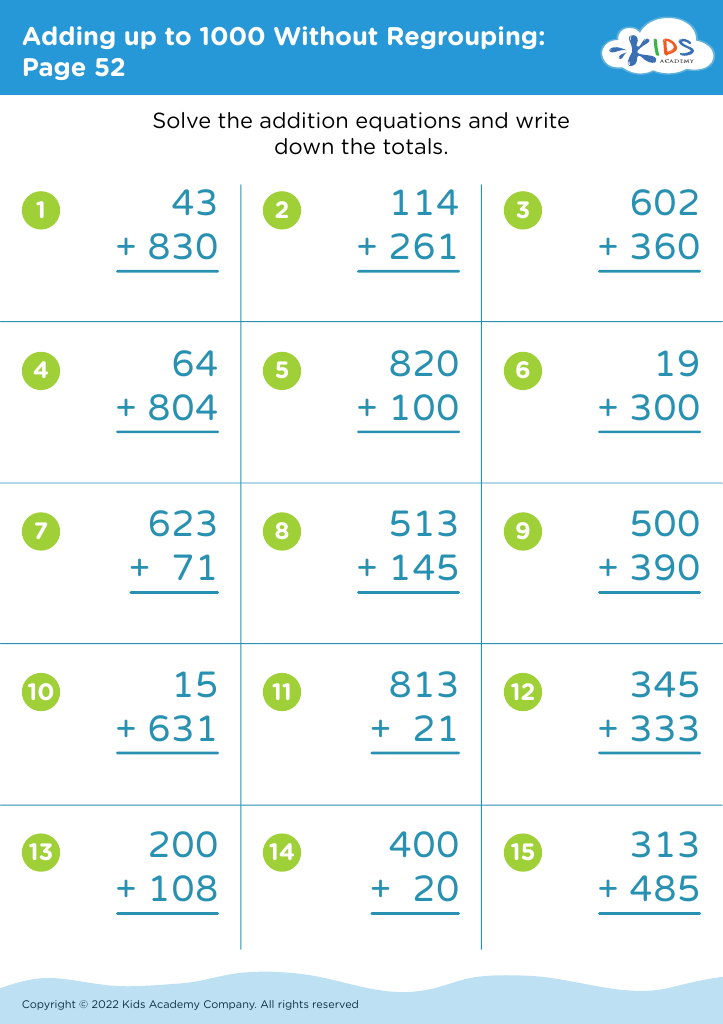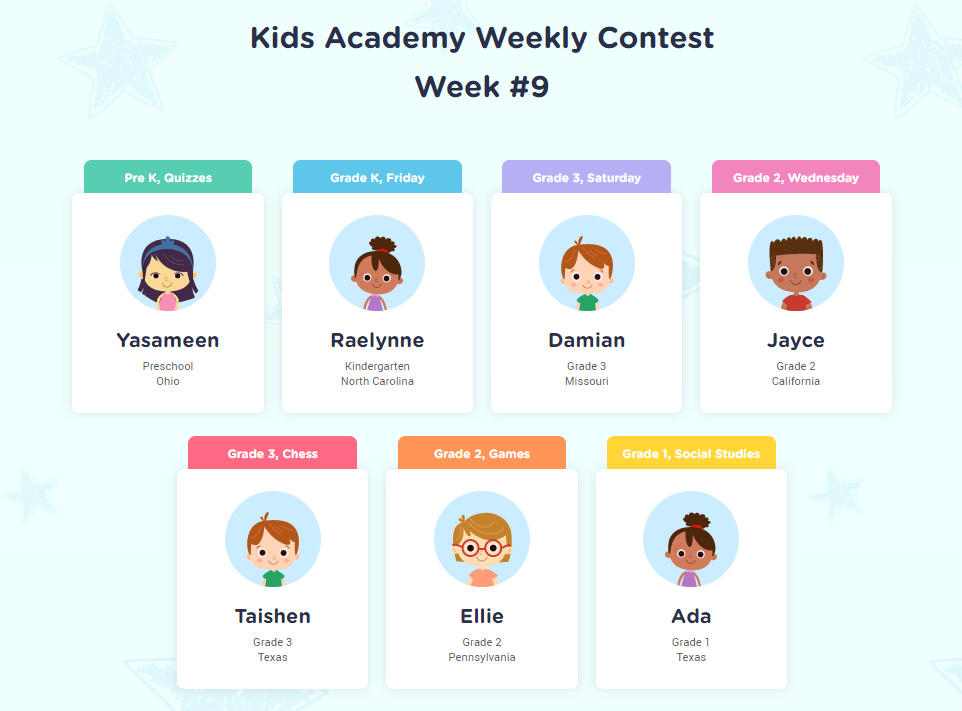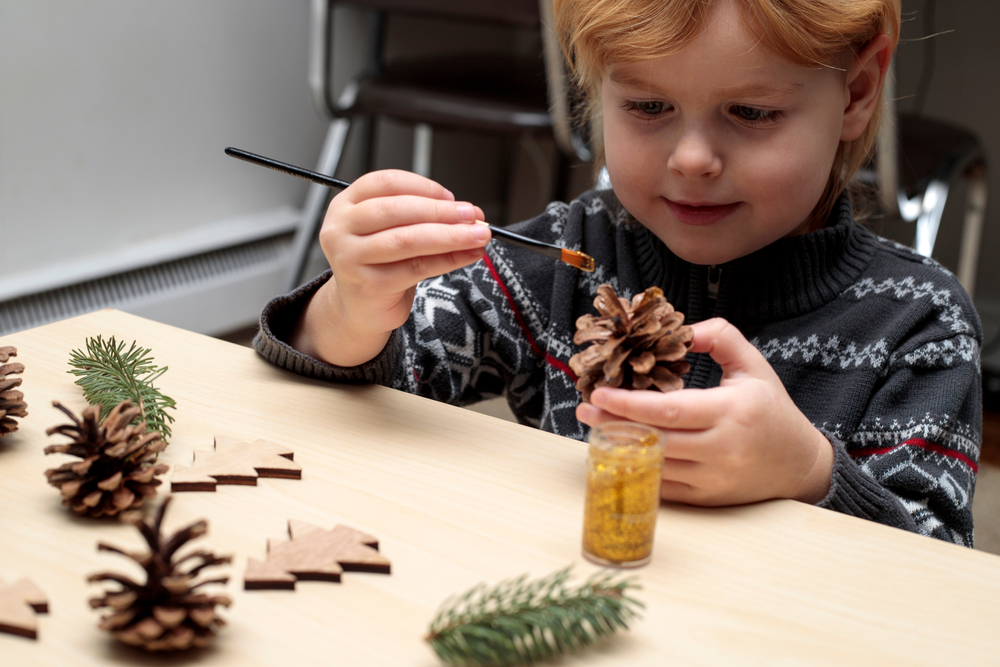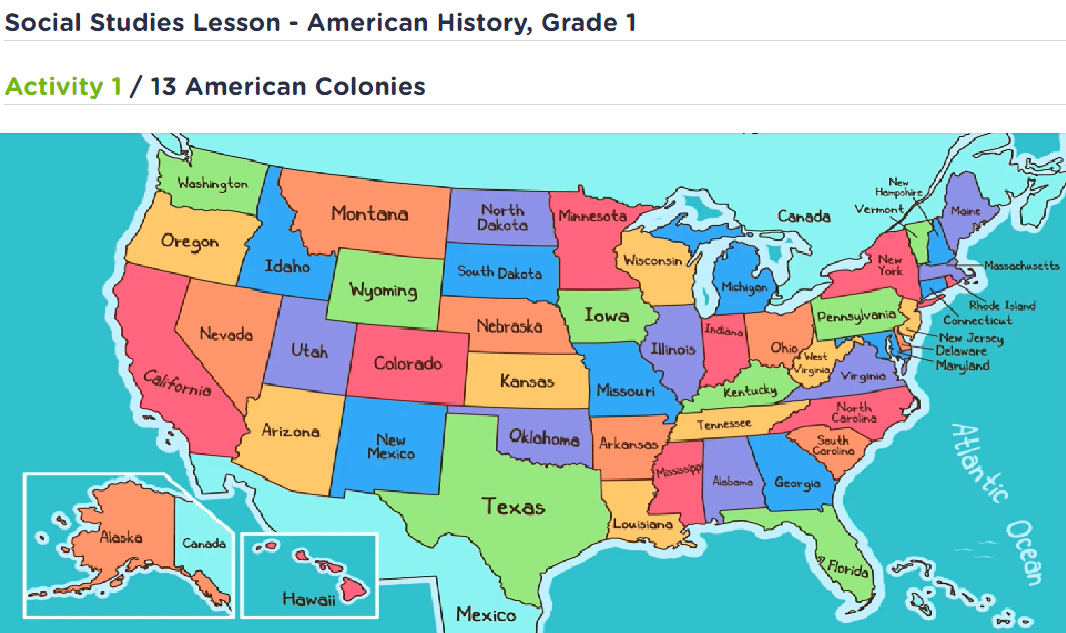Promote analytical thinking Worksheets for Kids
1 filtered results
-
From - To
Question/Answer
Why is the Promote analytical thinking skill important for Grade 2 students?
Promoting analytical thinking in Grade 2 students is crucial as it enhances their problem-solving abilities and critical thinking skills. It helps them understand relationships between concepts, improves decision-making, and encourages curiosity and independent learning. Developing this skill early sets a foundation for academic success and better prepares them for complex tasks and challenges in future educational endeavors.
What does the Promote analytical thinking skill mean when it comes to Grade 2 Adding up to 1000 Without Regrouping learning?
Promoting analytical thinking in Grade 2 for adding up to 1000 without regrouping means teaching students to understand and apply logical reasoning to add large numbers. It involves encouraging them to break down problems into simpler parts, look for patterns, and use strategies like counting on, making ten, and using known facts to solve addition problems efficiently and accurately.
What are some effective activities to train students’ Promote analytical thinking skill when teaching them about Adding up to 1000 Without Regrouping?
To foster analytical thinking in students learning to add up to 1000 without regrouping, engage them in pattern recognition exercises with sequences of numbers, use number puzzles that require strategic addition, implement real-life problem-solving scenarios involving adding large numbers, and encourage the use of manipulatives or visual aids to explore different combinations of numbers that add up to 1000.













